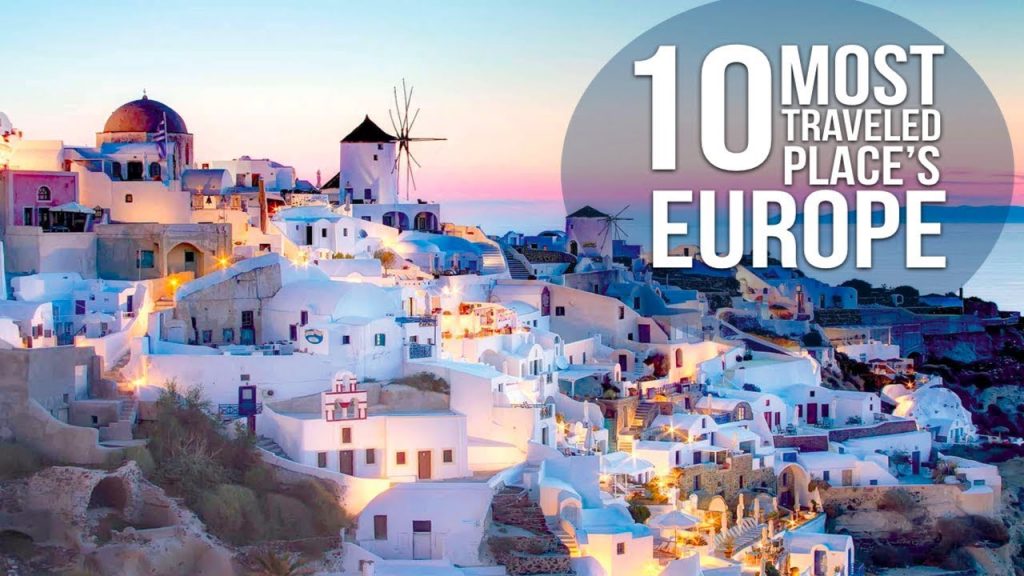10 Best Historical Marvels of Europe

Europe is a continent rich in history, culture, and architectural wonders. From ancient civilizations to medieval castles and Renaissance masterpieces, Europe boasts an impressive array of historical marvels. Europe’s historical marvels offer a glimpse into the continent’s rich and diverse past. From opulent palaces to ancient ruins and magnificent cathedrals, these sites continue to inspire awe and wonder. The preservation and appreciation of these historical treasures ensure that their legacy will endure for generations to come, inviting travelers from all corners of the globe to immerse themselves in Europe’s fascinating history and culture.
Here are some of the best historical marvels of Europe:
Palace of Versailles, France:
The Palace of Versailles in France is a renowned historical site, known for its opulence and grandeur. Built in the 17th century, it served as the royal residence for Louis XIV and later became the symbol of absolute monarchy. The palace’s vast gardens, stunning architecture, and lavish interiors make it a popular tourist destination, attracting millions of visitors every year. Its significance lies in its role in French history, particularly during the period of monarchy and the French Revolution.
Galata Tower, Turkey:
Standing tall in Istanbul, the Galata Tower is an iconic medieval stone tower that offers panoramic views of the city. Constructed in the 14th century by the Genoese, it has served various purposes throughout history, from a defensive fortification to an astronomical observatory. The Galata Tower is a remarkable symbol of Istanbul’s cultural heritage and has witnessed the city’s transformation through the ages. Book your Galata tower tickets and get access to the observation deck and get a memorable experience of Istanbul’s breathtaking skyline and surrounding beauty.
Acropolis of Athens, Greece:
The Acropolis of Athens, Greece, is an iconic ancient citadel situated on a rocky hilltop overlooking the city. It is renowned for its historical significance, architectural marvels, and cultural heritage. The most prominent structure is the Parthenon, a magnificent temple dedicated to the goddess Athena. Constructed in the 5th century BCE, the Acropolis stands as a symbol of ancient Greek civilization and showcases exceptional Doric architecture.
Colosseum, Italy:
The Colosseum, located in Rome, Italy, is an ancient amphitheater built during the Flavian dynasty in 70-80 AD. It is one of the world’s most iconic historical landmarks and a symbol of ancient Roman engineering and culture. The massive elliptical structure could hold over 50,000 spectators who gathered to witness gladiator battles, mock sea battles, and other public spectacles. Despite natural disasters and human activities taking a toll on the Colosseum over the centuries, it remains a testament to the grandeur and legacy of the Roman Empire, attracting millions of visitors from around the globe annually.
Alhambra, Spain:
The Alhambra is a magnificent palace and fortress complex located in Granada, Spain. Originally constructed in the mid-13th century by the Nasrid Dynasty, it later became the residence of Muslim rulers and their court. The Alhambra showcases stunning Islamic architecture, intricate tilework, beautifully landscaped gardens, and intricate stucco decorations. It represents the height of Moorish art and culture in Spain. The Alhambra’s beautiful courtyards, intricate stucco work, and lush gardens leave visitors enchanted by the legacy of Islamic culture in Spain.
Stonehenge, United Kingdom:
Stonehenge is an enigmatic prehistoric monument located on Salisbury Plain in Wiltshire, United Kingdom. It consists of a circular arrangement of large standing stones, some weighing over 25 tons, dating back to around 2500 BC. The purpose and construction methods of Stonehenge remain a subject of fascination and speculation, with theories ranging from religious rituals to astronomical observatory functions. As a UNESCO World Heritage Site, Stonehenge continues to captivate visitors from around the world, providing an intriguing glimpse into the ancient civilization and the mysteries that surround this iconic megalithic structure.
Hagia Sophia, Turkey:
Hagia Sophia, located in Istanbul, Turkey, is an architectural marvel with a rich history. Originally constructed as a cathedral in 537 AD during the Byzantine Empire, it later served as an imperial mosque under the Ottoman Empire and was converted into a museum in 1935. The structure showcases a stunning blend of Byzantine and Islamic elements, with impressive domes, intricate mosaics, and grand arches.
The Vatican City, Vatican City State:
The Vatican City, a city-state enclaved within Rome, Italy, is the smallest independent country in the world. It serves as the spiritual and administrative center of the Roman Catholic Church, hosting the residence of the Pope, the leader of the Catholic Church. With a history spanning centuries, the Vatican boasts awe-inspiring landmarks like St. Peter’s Basilica and the Vatican Museums, home to priceless art collections, including the renowned Sistine Chapel ceiling painted by Michelangelo.
The Acropolis Museum, Greece:
The Acropolis Museum, located in Athens, Greece, is a modern architectural masterpiece dedicated to preserving and displaying the ancient artifacts found on the Acropolis hill. It opened to the public in 2009 and houses a remarkable collection of statues, friezes, and artifacts from the Parthenon and other nearby ancient temples. The museum’s design allows visitors to admire the exhibits while providing panoramic views of the Acropolis itself.
Prague Castle, Czech Republic:
Prague Castle, situated in the Czech Republic’s capital city, Prague, is a majestic and historic fortress complex. Dating back to the 9th century, it has served as the seat of power for kings, emperors, and presidents over the centuries. The castle boasts a diverse range of architectural styles, including Romanesque, Gothic, Renaissance, and Baroque, making it a remarkable example of European architecture. Key attractions within the castle complex include St. Vitus Cathedral, the Old Royal Palace, and the Golden Lane. It overlooks the enchanting city of Prague, making it a must-visit historical gem in Europe.
Also Read:- List of Cities In The European Union By Population








